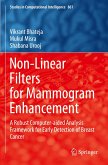Within the past few decades MRI has become one of the most important imaging modalities in medicine. For a reliable diagnosis of pathologies further technological improvements are of primary importance. This study deals with a radically new approach of image encoding. Gradient linearity has ever since been an unquestioned technological design criterion. With the advent of parallel imaging, this approach may be questioned, making way of much a more flexible gradient hardware that uses encoding fields with an arbitrary geometry. The theoretical basis of this new imaging modality - PatLoc imaging - are comprehensively presented, suitable image reconstruction algorithms are developed for a variety of imaging sequences and imaging results - including in vivo data - are explored based on novel hardware designs.








